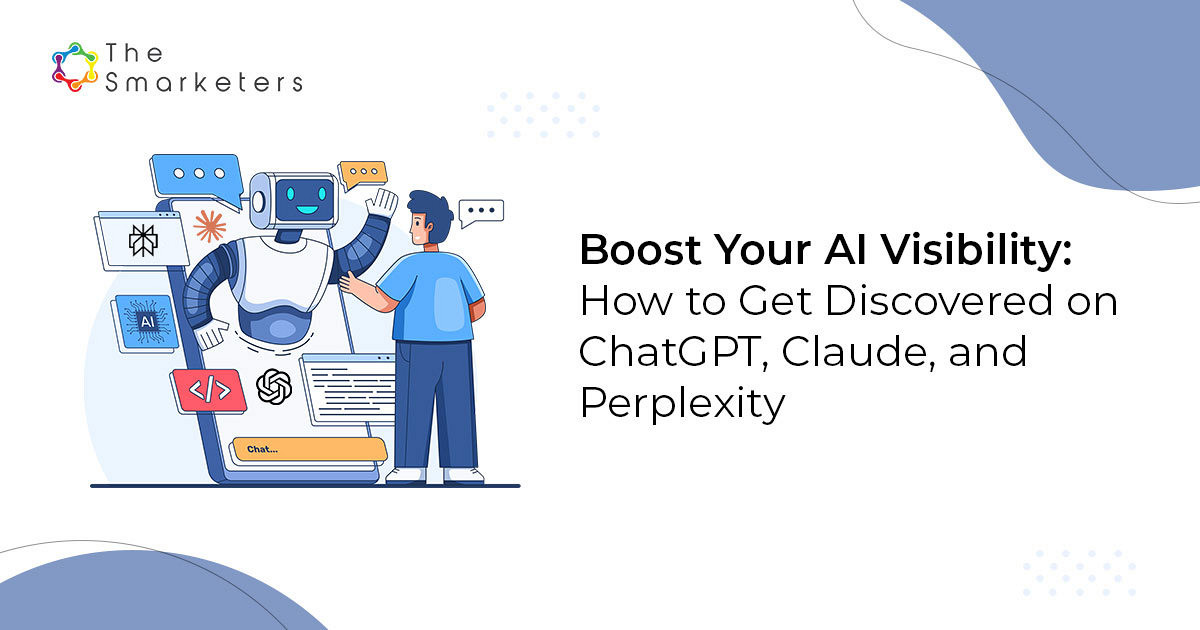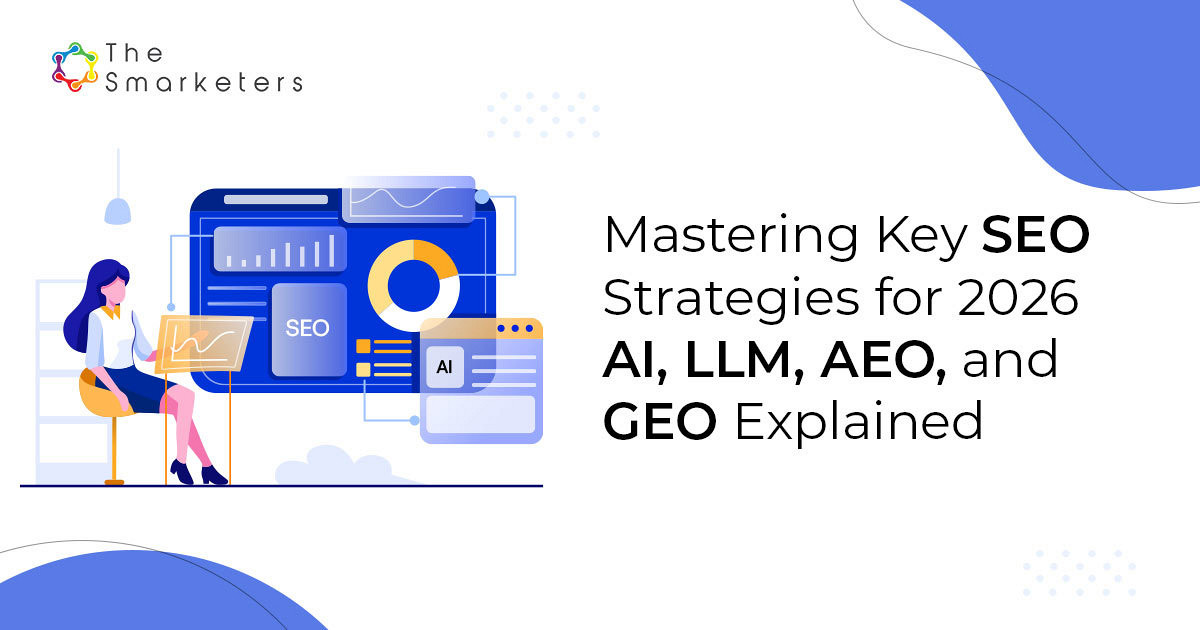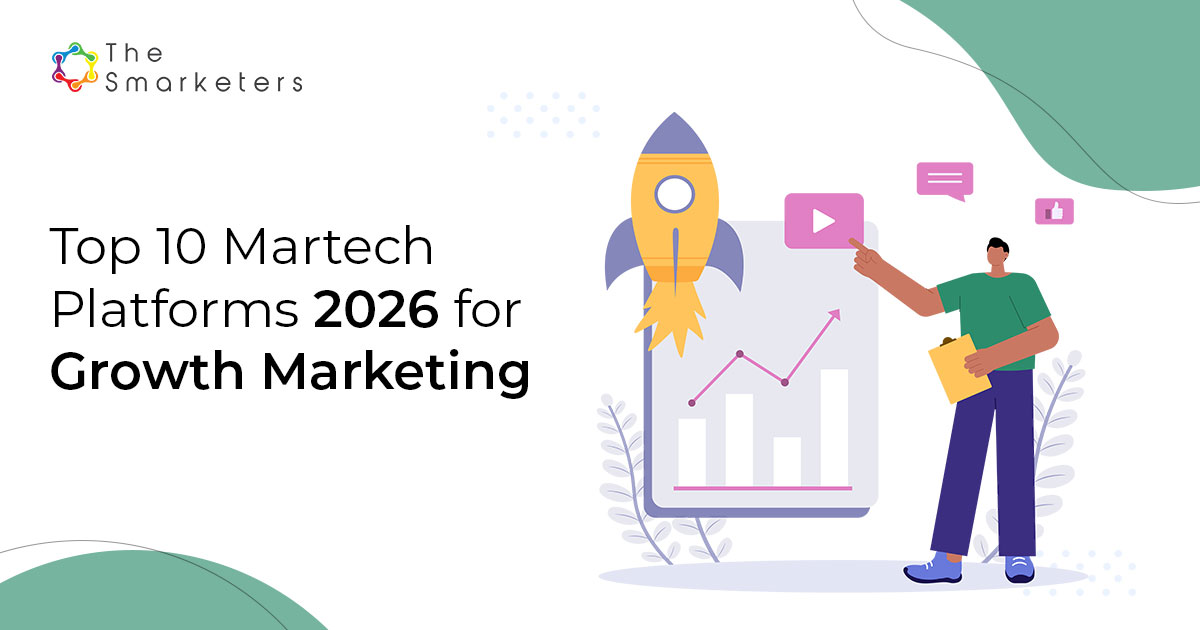Table of Contents
- Mastering Key SEO Strategies for 2026: AI, LLM, AEO, and GEO Explained
- The New Digital Mandate: How to Rank in Google’s AI Overviews with AEO, GEO, and LLM Optimization
- Answer Engine Optimization (AEO): Creating FAQ and Conversational Content for AI
- Content Revamp: How Updating Old Content Boosts Performance with LLMs
- The complete guide to Generative Engine Optimization for B2B Companies
Understanding the SEO vs. GEO Game
If you've been doing digital marketing for a while, you know SEO (Search Engine Optimization) inside and out. But now there's a new player in town: GEO (Generative Engine Optimization). And though it's not replacing SEO, it's definitely changing the playbook.
How to Optimize Content for Conversational AI Visibility?
Ready to make your content AI-friendly? Here are five actionable strategies for LLM content optimization that'll help you master ChatGPT visibility optimization and improve your conversational AI ranking. No fluff. Just what works.
1. Understand How AI Tools Extract Information
Conversational AI tools like ChatGPT draw information from two main sources:
Pre-trained Knowledge Base
An AI model’s knowledge base comprises data derived from digital books, blogs, forums, news articles, and credible websites. Since the training data is static and locked to a cutoff date, it will display your content if it was well-structured and publicly accessible during that cutoff window.
In plain words, quality, authoritative content gets absorbed into the model's knowledge. Thus, focusing on building a cluster of evergreen topics can significantly boost Conversational AI visibility and influence answers in real-time.
Real-time Web Browsing
When browsing mode is active, conversational AI tools use Google and Bing to search and summarize the latest web content. So, your search engine ranking directly impacts real-time citations.
- Content must be crawlable, structured, and easy to parse
- Topical authority signals trustworthiness to search engines and AI
Conversational AI ranking hinges on clarity, structure, and authority. Credible, easy-to-parse content that directly targets user intent helps you stay ahead in the AI discoverability framework.
2. Structure Your Content Like a Conversation
AI models favor content that reads like you're guiding someone through a topic, not lecturing them. Write for humans having a conversation, and you'll automatically improve your prompt engineering for visibility.
What works for conversational structure:
- Break ideas into logical sections – Use clear steps or phases. Think: What's the problem? What's the cause? What's the solution?
- Use question-based headers – Format subheadings that mirror real user queries, like "What's the Best Way to Build an Email List?" or "How Do I Get More Newsletter Subscribers?"
- Use descriptive subheadings – These act as signposts for both human readers and AI. Frame them as questions ("How do I test website speed?") or clear claims ("Why Page Speed Matters").
- Lead with the answer – Start each section with a direct response, then add depth and examples. AI tools prioritize clear, upfront answers.
- Anticipate follow-up questions – If you're explaining a concept, add sections that answer natural next questions. Completeness boosts AI-driven content engagement.
- Use a natural tone – Skip keyword stuffing and robotic language. The written piece should sound like a conversation between two people.
- Keep it scannable – Short paragraphs, bullet points, and clear formatting help AI identify and extract key information.
Example structure
Instead of a dense, technical block stuffed with jargon, organize content like this:
- Opening: What's the topic and why does it matter?
- Middle: Break down key concepts with subheadings
- Support: Add "How do I...?" or "What tools...?" or “Who we help?” sections
- Closing: Summarize or provide next steps
Conversational structure isn't just more engaging for readers – it makes your content easier for AI tools like ChatGPT to interpret and cite. The goal is to create content that flows easily and matches the natural conversational style of humans. When you write like you're helping someone solve a problem, you're already winning at generative AI content discoverability.
3. Build Topic Authority
AI tools prioritize sources that demonstrate depth and consistency across a topic. So, the key to boosting AI visibility is via building content clusters that establish your brand as a trusted authority in your industry.
Typically, a single blog or video cannot cover every aspect of a topic. If you were to approach a topic from multiple angles, trying to cover everything, it would be an extremely long read - something that just won't fly in the age of diminishing attention span. Thus, it's best to start with a pillar page that broadly covers a topic, then build multiple related content pieces around it, creating a content cluster. These assets can be connected via interlinks.
Building topic authority is essential for LLM-based content targeting. When you demonstrate comprehensive expertise through well-structured clusters, you become the trusted source that AI tools like ChatGPT, Gemini, and Perplexity can confidently cite. Needless to say, it makes for a better user experience: readers can find answers to their queries in the established clusters, without leaving your website.
Quick implementation tips:
- Use tools like AnswerThePublic to uncover questions people are asking
- Ensure each piece is valuable standalone but clearly connected to the broader topic
- Use consistent terminology so AI recognizes your authority on the subject
- Update clusters regularly to keep the content fresh and relevant
4. Schema Markup is the Secret to Speaking Machine Language
Plain text isn't enough. Schema markup (structured data) acts like labels that tell AI exactly what your content is about. It acts like a detailed map for AI models, helping them understand what each content asset contains. The easier you make it for AI tools to navigate your content, the greater the chance it will be noticed and cited.
Schema types that influence conversational search ranking factors:
- FAQ Schema – Tags questions and answers clearly, making your content perfect for direct AI citations.
- How-To Schema – Breaks tutorials into clear steps that AI can extract and summarize effortlessly.
- Article Schema – Adds metadata such as author, date, and headline to improve credibility and context.
- Product Schema – Highlights pricing, reviews, and availability for e-commerce content.
Why is it important?
Using structured data throughout your content significantly increases the chances of appearing in featured snippets and AI-generated summaries. Additionally
- AI tools can interpret and trust your content more easily
- Your site becomes a structured, authoritative source that AI tools reference
- It improves generative AI content discoverability across all platforms
You can leverage free tools like Google's Structured Data Markup Helper, which tags content by highlighting sections. There are also WordPress plugins like Rank Math and Yoast SEO that offer built-in schema options.
5. Don’t Miss Out on UGC Platforms
AI answer engines heavily source from UGC platforms like Quora, Reddit, and YouTube – not just traditional websites. Semrush data shows these platforms consistently appear in AI responses because they contain real people answering real questions. Publishing only on your site means you're missing a massive piece of the AI-driven content engagement opportunity.
A good way to start is by repurposing high-performing blogs into Q&A posts on Quora, how-to threads on Reddit, and explainer videos on YouTube, then linking back to comprehensive guides on your site.
Where to publish:
- Quora – Answer niche questions with detailed responses
- Reddit – Participate authentically in relevant subreddits
- YouTube – Create videos with descriptive titles, full descriptions, and transcripts
If you show up where AI tools actually source answers, you can multiply your chances of being cited. This is AI content promotion and conversational AI visibility in action. Make sure to use credible sources to create contextual posts. This ensures more upvotes and watch time, making them good targets for AI. Also, instead of spamming readers with links to your products/services, provide them with useful information.
Here are some tools that help track your success:
- Editorial calendar – Schedule regular participation
- Semrush filters – Identify which UGC platforms appear for your topics
- UTM parameters – Track traffic and conversions from UGC platforms
- Response log – Document what works to inform future content
6. Maintain Consistent Branding
AI systems recognize patterns and connections. When your brand name, contact details, or messaging vary across platforms, it confuses algorithms that are trying to identify you as a trusted source.
The math is simple:
Inconsistent branding = missed citations. Consistent branding = stronger ChatGPT business branding and AI conversation branding.
Think about it: If your company is "BlueSky Digital" on your website, "BlueSky Marketing" on LinkedIn, and "BlueSky.io" in directories, AI can't confidently connect these as one entity. Though humans might figure it out, machines need clear, consistent signals. When every mention of your brand matches perfectly, AI models confidently link all your content to a single authoritative identity.
Core consistency checklist:
- Use identical brand names – The exact same name on your website, social profiles, business directories, and industry listings. No variations or abbreviations
- Standardize contact details – Phone numbers, email addresses, and physical locations must match everywhere
- Unify visual identity – Keep logos, color schemes, and brand imagery consistent across all touchpoints
- Align messaging – Use the same company tagline, mission statement, and executive bios across platforms
Implementation steps:
- Audit all existing profiles – Document where inconsistencies exist
- Create a brand standards document – Define official name, contact details, bios, and messaging
- Update systematically – Work through each platform to align with your standards
- Claim unclaimed listings – Find and complete profiles on platforms you haven't touched
- Monitor regularly – Set quarterly reviews to catch and fix inconsistencies
Consistent branding acts as a beacon for AI. When your identity is uniform across the web, AI models confidently connect all your content and cite you more frequently. This isn't just good marketing – it's an essential AI discoverability framework strategy.
7. Track, Measure, and Optimize
You can't improve what you don't measure. AI visibility isn't a set-it-and-forget-it strategy – it's dynamic and requires consistent monitoring.
The good news? There are tools to help you track how often your content appears in AI summaries and where those citations are coming from. Understanding these patterns is critical for refining your AI visibility strategy and maximizing conversational AI visibility. You can check out tools like AlsoAsked, MarketMuse, and Surfer SEO.
Start by establishing baseline metrics for how your content performs in AI-generated responses. Track which pieces get cited most frequently, what formats work best, and which platforms drive the most AI-sourced traffic. This data becomes your roadmap for doubling down on what works and adjusting what doesn't.
Key metrics to monitor:
- Google Search Console – Check search appearance for AI Overview impressions and performance data
- Referral traffic – Monitor incoming traffic from AI tools like Google AI Overviews, Bing Chat, and other conversational AI platforms
- Content engagement – Use SparkToro or Similarweb to assess how your content performs across different channels
- Citation patterns – Document when and where your content appears in AI summaries to identify trends
Once the metrics are established, create a monthly review process, following the tips below:
- What content is ranking in traditional search vs. appearing in AI Overviews?
- Which formats (how-tos, FAQs, lists) are getting cited most by AI tools?
- Are certain topic clusters performing better than standalone articles?
- What referral traffic patterns are emerging from AI platforms?
Make sure to A/B test different content formats, keyword targeting, and structural approaches, and adjust your content strategy accordingly.
The Future is AI-First — And it's Already Here
Search behavior has fundamentally changed. People aren't clicking through ten blue links anymore. They're having conversations with AI and getting complete answers in seconds.
ChatGPT processes over 10 million queries daily. Perplexity is becoming the research tool of choice for professionals. If your brand isn't showing up in these conversations, you're losing market share to competitors who are.
The eight strategies in this guide aren't theoretical exercises – they're practical moves you can implement this week. Some are quick wins: adding schema markup, reformatting headers as questions, or claiming your business profiles. Others require sustained effort: building content clusters, establishing presence on UGC platforms, or maintaining measurement systems. But all of them share one characteristic: they work because they align with how AI discovery optimization actually functions.
Think of AI visibility strategy as the evolution of SEO, not its replacement. You're not throwing away keyword research or link building – you're layering on conversational structure, authoritative depth, and machine-readable formatting. The marketers who master ChatGPT visibility optimization while maintaining traditional SEO excellence? They're the ones who'll dominate their categories for the next decade.
Here’s a Monthly Action Plan for You:
- Week 1: Run an AI readiness audit – Review your top 10 pages for conversational structure, clear answers, and schema markup gaps
- Week 2: Launch your first content cluster – Identify your core expertise area and map out one pillar piece plus 3-5 supporting articles
- Week 3: Expand your distribution – Create accounts on Quora and relevant subreddits, answer 3-5 questions per week with genuine expertise
- Week 4: Build your tracking system – Set up Google Search Console monitoring, create UTM tags for UGC links, and document your first AI citations
You now have the roadmap. The only thing standing between you and better AI-driven content engagement is action.
Our experts, at The Smarketers, can help you drive that action. We can help you build a digital presence that thrives regardless of how technology evolves. The brands that adapt fastest win. Make yours one of them.
If this intrigues you, get in touch with us today!
Frequently Asked Questions
1.What's the difference between SEO and GEO?
SEO (Search Engine Optimization) focuses on ranking your content on search engine results pages so users can click through to your website. GEO (Generative Engine Optimization) focuses on getting your content cited and quoted directly in AI-generated responses. SEO makes you discoverable; GEO makes you quotable.
2.How long does it take to see results from AI visibility optimization?
Quick wins like adding schema markup or reformatting headers can show results within weeks. Building topical authority through content clusters typically takes 3-6 months. Consistent branding and UGC platform presence require ongoing effort but can start driving AI citations within 2-3 months.
3.Do I need to stop doing traditional SEO to focus on AI visibilit?
Absolutely not. AI visibility strategy is an evolution of SEO, not a replacement. Continue your keyword research, link building, and technical SEO while adding conversational structure, schema markup, and authoritative depth. The best approach combines both.
4.Which AI tools should I optimize for?
Focus on the major platforms: ChatGPT, Claude, Google's AI Overviews, Perplexity, and Gemini. Since many AI tools use similar sourcing methods (such as Bing integration or training data), optimizing for one often improves your visibility across multiple platforms.
5.Is schema markup difficult to implement?
Not anymore. Tools like Google's Structured Data Markup Helper, Rank Math, and Yoast SEO make it accessible even without coding knowledge. Most WordPress sites can add schema in minutes using plugins.
6.What's a content cluster, and how do I build one?
A content cluster is a comprehensive pillar article surrounded by 3-7 supporting pieces on related subtopics, all interlinked. Start with one core topic you're expert in, create an in-depth guide, then write focused articles answering specific questions related to that topic.
7.Should I really be spending time on Quora and Reddit?
Yes, if AI visibility matters to you. Semrush data shows these UGC platforms consistently appear in AI-generated responses. A few hours per week answering genuine questions can significantly boost your AI discoverability – just be authentic, not promotional.
8.What if my business name is inconsistent across platforms?
Start an audit immediately. Document every variation, create a brand standards document, then systematically update each platform. AI systems struggle to connect inconsistent brand identities, which directly impacts your citation likelihood.
8.Can small businesses compete with large brands for AI visibility?
Absolutely. AI tools prioritize clarity, structure, and helpfulness over brand size. A well-optimized small business blog with strong topical authority can get cited over Fortune 500 content that's poorly structured or jargon-heavy.
9.What content formats work best for AI discovery?
How-to guides, FAQ pages, step-by-step tutorials, and question-based articles perform exceptionally well. Lists, comparison articles, and conversational explainers also get high AI citation rates. Avoid dense, technical jargon blocks.
10.How often should I update my content for AI visibility?
Review and refresh your top-performing content quarterly. Update statistics, add new sections addressing emerging questions, improve schema markup, and strengthen internal linking. Fresh content signals authority to both search engines and AI.









